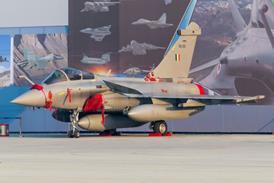European authorities are proposing a broad ground-handling regulation aimed at increasing safety and consistency of processes while preparing for flight departure and dealing with flight arrival.
Ground-handling has been “largely self-regulated”, says the European Union Aviation Safety Agency, with operational arrangements – including safety tasks – contained in bilateral agreements with carriers.
But the desired level of standardisation of procedures and training is “not yet consistently achieved”, it states. It adds that responsibility for safety of handling services has tended to lie with airlines, rather than the handling provider – and aircraft operators should “no longer bear alone” this burden.
EASA’s proposal seeks to establish a “level playing-field” for provision of handling, ensure a “safety baseline” and set minimum training standards. It will establish a legal framework to support development of a safety culture and enable effective exchange of safety information.
These measures are intended to reduce the “high number” of industry audits performed each year in the handling sector, adds EASA – perhaps as many as 600 for a single handling organisation with 100 stations.
“The resources spent on so many audits that produce the same results are counterproductive,” it states. “The efficiency of verifying a [ground-handling] organisation’s compliance with the requirements and with the operational procedures should be improved.”

EASA wants to establish a system for authorities to perform oversight of handling organisations and their activities. While the proposal is primarily directed at safety benefits, there is also a potential efficiency gain.
“In a risk-based oversight environment, measurable safety improvements are automatically followed by a reduction of oversight pressure,” says EASA.
The proposed regulation – which will affect some 300,000 personnel – will cover cybersecurity as well.
“This entirely new proposal fills an important gap in the overall regulation of aviation operations in the European Union, which means that we will now have an end-to-end approach to ensuring aviation safety and cybersecurity,” says EASA acting executive director Luc Tytgat.
Analysis of aviation safety reports in the European Commission repository since 2015 show that just 4% can be attributed with certainty to ground-handling organisations, and over three-quarters of these occurrences were submitted by just two EASA member states.
There could be various reasons for the imbalance and low number of reports, including complexity of reporting, absence of consequences, insufficient safety culture, or lack of clear responsibility lines between aircraft operators and ground-handlers.
Ground-handling occurrences rarely lead to fatal accidents, despite the intensity of ramp operations, but EASA says there is “room for improvement”. Severity of incidents might not be the best indicator of safety levels, it adds, whereas the number of events resulting in aircraft or vehicle damage – which is high – could be more relevant.
EASA expects a formal regulation to be published late this year or early in 2025, with a three-year implementation period.


























